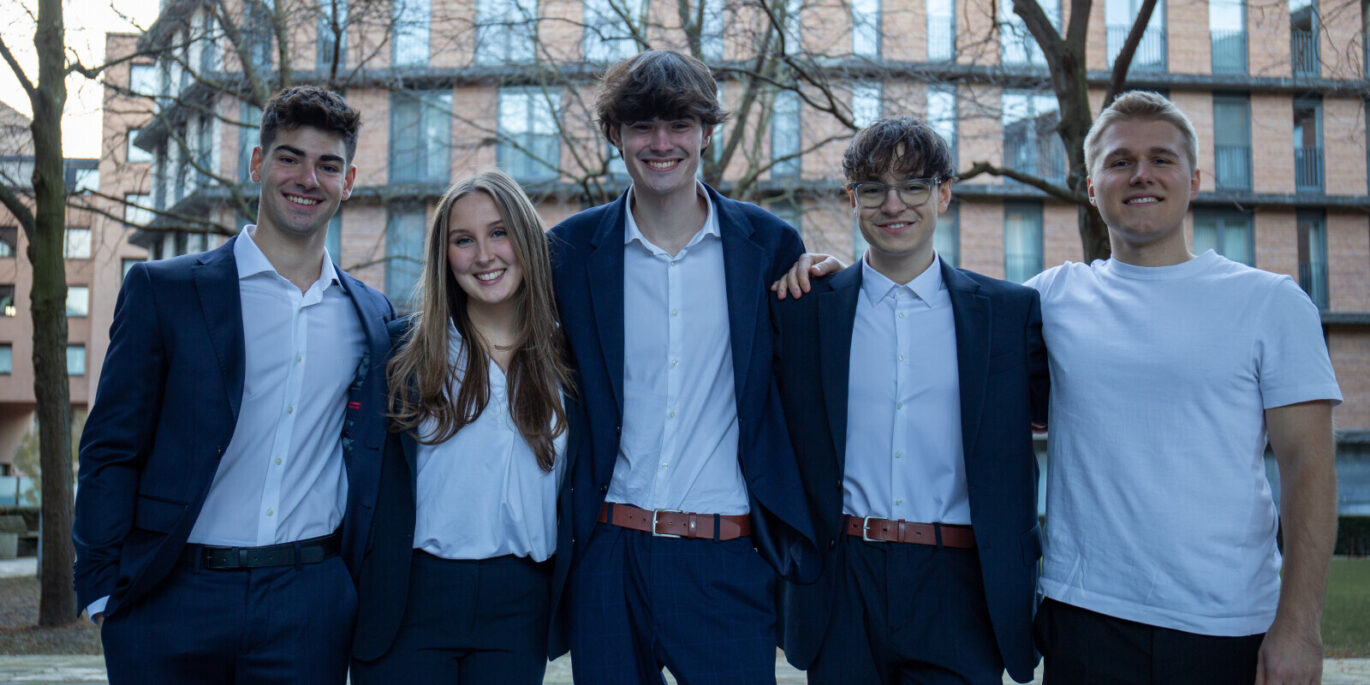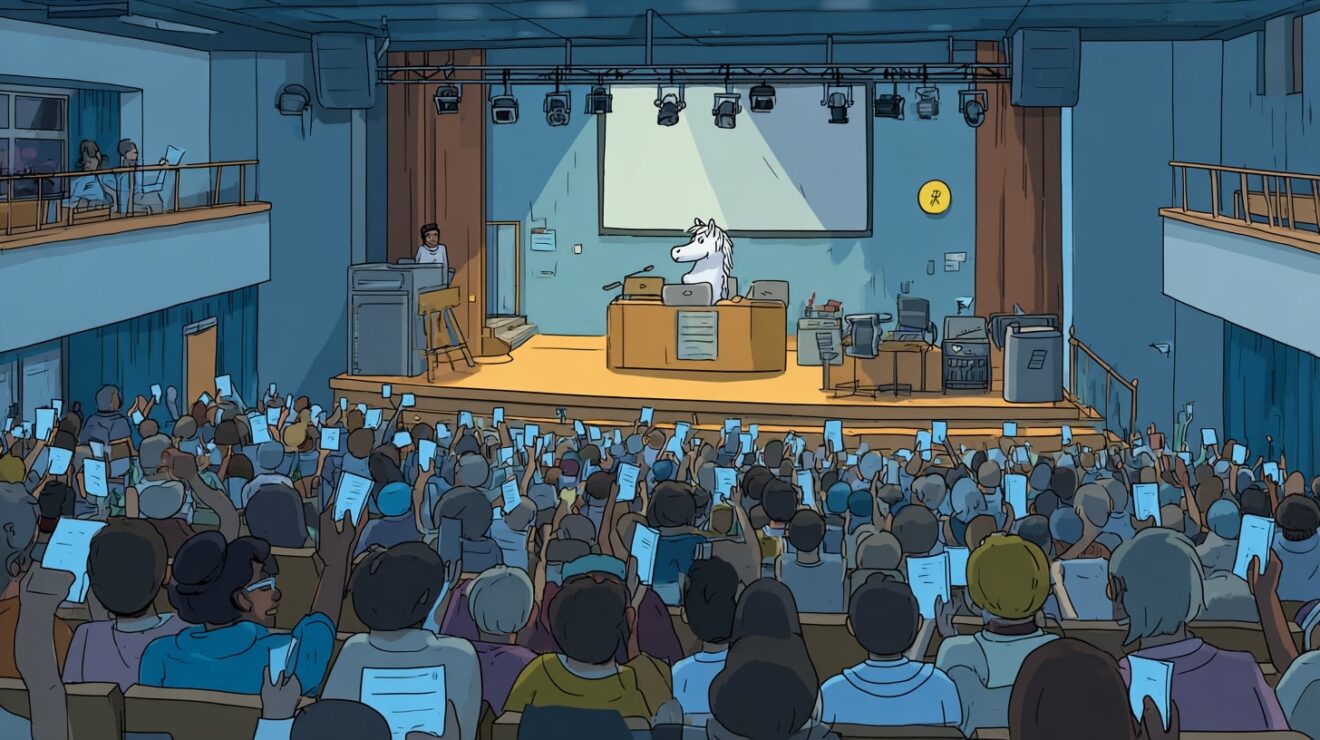One of the articles that’s been stuck on the “must get around to writing that” list for a couple of years explores why it is that full-time elected officers in UK SUs are elected to serve a summer to summer academic year.
So as Cosmic Ballet weekend kicks off (more sabbs start handover on the third Monday of June than any other day), a train journey has allowed me to finally get around to it.
The current model is so universal – so normal – that we rarely stop to question it. Spring elections, summer handovers, sabbatical terms that mirror the academic calendar from July to June – that the way we’ve always done it. But does it have downsides?
Lots of SU systems in Europe run January to December, even where their universities maintain traditional September-start academic years. Elections happen in October or November, then officers take up their posts in the first weeks of January. When you start listing the advantages, the case becomes surprisingly compelling.
The membership disconnect
Under our current system, new sabbatical officers spend their first few months getting to grips with the role just as most students disappear for summer. By the time September rolls around and the membership returns en masse, officers are still finding their feet – right when the union needs to be at its most visible and effective.
The membership-facing stuff becomes less of a surprise under a January start model.
More fundamentally, the handover itself improves because everyone’s still around. There’s no longer a need to pack everything into fortnight.
Sabbs we’ve met on our Study Tours who start in January know the ropes by the time that crucial first term arrives. Welcome Weeks – traditionally the busiest and most impactful period for student engagement – happen when officers are nine months into their role, not nine weeks.
Priorities become less owned by “that year’s sabbs” because there’s always two sets of officers in any given academic year. That forces genuine student interest political strategy rather than the annual reset we currently see, where institutional memory evaporates each July and the same battles get fought year after year.
The institutional cycle
University strategy cycles, budget setting, and curriculum reviews – all sorts happens in the calendar year’s first half. Having experienced officers in place during that window means students’ views are more likely to be considered early, not retrospectively rubber-stamped. A January intake gives sabbs time to understand institutional structures before September arrives.
The democratic case is compelling. Elections currently happen during the most important and stressful term for many students – when dissertations loom, exams approach, and engagement inevitably suffers. Moving elections to autumn spreads the load, potentially increasing participation from students who simply can’t engage with union democracy during their final term.
We already accommodate January-start students, many of whom have to pause their (final or single) year before finishing. Why not extend that thinking to our democratic structures?
And if someone gets cold feet or drops out? You can still run a by-election because students are actually around, rather than scrambling to fill positions over summer when quoracy becomes a democratic fiction.
There’s something odd about our current system when it comes to the link between elected and electorate. Sabbatical officers get elected by their peers in March, take office in July, and then watch those very same students – their friends, their voters, their political base – graduate and disappear. They’re representing a student body they may not have much connection with.
Under a January model, officers elected in autumn would serve alongside their own cohort through most of their term. The students who elected them, who share their experiences and frustrations, who understand why certain issues matter – they’d still be around. Not just for accountability, but for solidarity.
It’s about more than just having your mates around (though the mental health implications of losing your entire support network three months into an intensive leadership role shouldn’t be dismissed). It’s about democratic legitimacy. How can you claim to represent students when the students who gave you that mandate have already left?
Breaking institutional dependencies
Maybe most importantly, a January start gets universities used to dealing with multiple officers rather than relying on single points of manipulation. It also breaks down the sharp contrast between public-facing term time and that internal (sometimes too comfortable) summer culture where real decisions get made in quiet rooms.
Rep recruitment, society support, and campaign calendars can be better co-designed with relevant experience and foresight – not thrown together in a September panic.
The calendar-year term may also be more compatible with PGT, PGR, or health course dates – or for those juggling childcare or part-time work. It offers better access to sabbatical roles beyond the traditional undergraduate finishing cohort, addressing long-standing concerns about who gets to lead our unions.
With sabbs overlapping two academic years, institutional memory becomes less vulnerable to that perennial “we had this issue last year but no one remembers” problem. Officers can track long-running student issues across the full cycle, building the kind of sustained pressure that actually changes things.
Rather than sabbs being the only ones expected to rapidly adapt, the January model requires the university to also adapt to new leadership mid-cycle—opening space for culture change and mutual learning. It chips away at the “you fit into our system” dynamic that too often constrains student leadership.
Sabbatical officers who start in January are more likely to be in full command of their brief by the time key national campaigns or lobbying efforts kick off. Whether that’s tuition fee debates, rent strikes, or voter ID implementation, it avoids the annual cycle of our most experienced activists leaving just as momentum builds.
The constant campaign mode from February to March that can overshadow SU activities gets somewhat diffused. Instead, there’s space for a fun political “relaunch” at the calendar year’s start, with fresh, eye-catching student priorities that aren’t immediately subsumed by freshers fever.
Finding a job after serving as a sabb becomes significantly easier when your term ends in December – especially if you have a term left where you just need finish a diss or project. Aligning with graduate recruitment cycles and the natural rhythm of the job market helps, and it’s a softer landing that might encourage more officers to complete their full term rather than jumping ship early for that perfect opportunity.
Doing any academic work after doing a sabb role is also much easier – those final year marks are likely to be significantly improved.
SU staff often take leave or rotate roles over the summer, which can make inducting sabbs chaotic or inconsistent. A January start gives the SU team more capacity to deliver thorough induction and mentoring – without juggling holidays, audits, or their own well-deserved breaks. And it means the membership – its committees, its activists and its key volunteers – can be involved as well as just staff.
So why haven’t we done it?
The barriers are obvious. Tradition weighs heavy in higher education. Constitutional changes require significant effort. The coordination needed to avoid a messy transition seems daunting. But these are problems of implementation, not principle.
Change would be hard, but perhaps SUs could pilot it with one post? Testing the model with a single officer position could work – maybe one that already struggles with the traditional timeline, like a postgraduate officer who routinely finds themselves representing students on a completely different academic cycle. Learning what works, ironing out the kinks and building the evidence base is something SUs should be great at.
As another cohort of sabbatical officers pack up their offices this week, preparing to hand over to successors who’ll spend their first months learning the ropes while campuses empty for summer, perhaps it’s time to seriously consider whether our sacred timeline still serves its purpose. Or whether, like so much in higher education, we’re just doing it this way because we’ve always done it this way.


















